In our experience, waves are much more likely to cause boats to break anchor than wind. While wind clearly whips up the waves & increases water action, it’s more important to be protected from the waves than the wind. (Photo is of the Esnadup anchorage in the San Blas Islands, Panama.)
So exactly how does this work? Normally, if you’re in an anchorage totally enclosed by land, you have both water and wind protection. But once you leave the U.S., and even in the U.S., totally encircled anchorages are rare. And sometimes have issues of their own, noseeums if you’re in south Florida. So when you’re thinking of “total protection”, expand to include breaking reefs, barely submerged reefs and sandbars/brown bars.
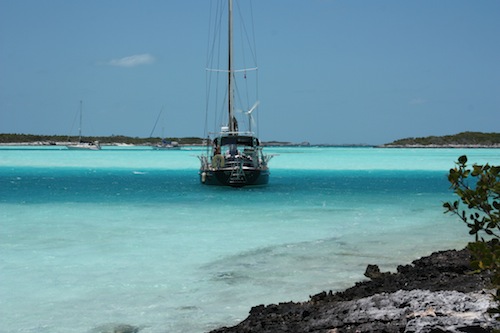
And if you’re simply looking for protection from tradewinds, easterlies in the Caribbean, often even a breaking reef in front of you is adequate … and has the advantage of being anchored close to the reef for snorkeling, diving or spearfishing (where legal). Of course, this is only for settled tradewind weather. Make sure your anchor is buried well in the sand by diving on it to check.
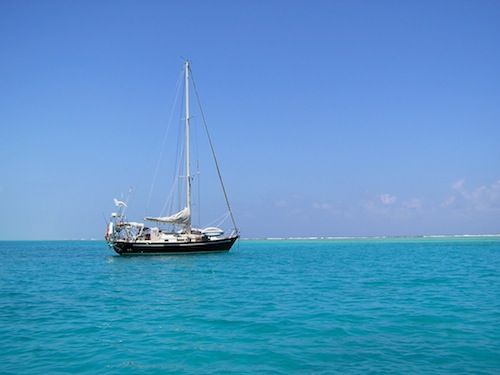
Don’t forget … land is not the only thing that can provide flat water. Reefs close to the surface, particularly breaking reefs and sandbars have the same effect — keeping the waves out, although the wind blows across.
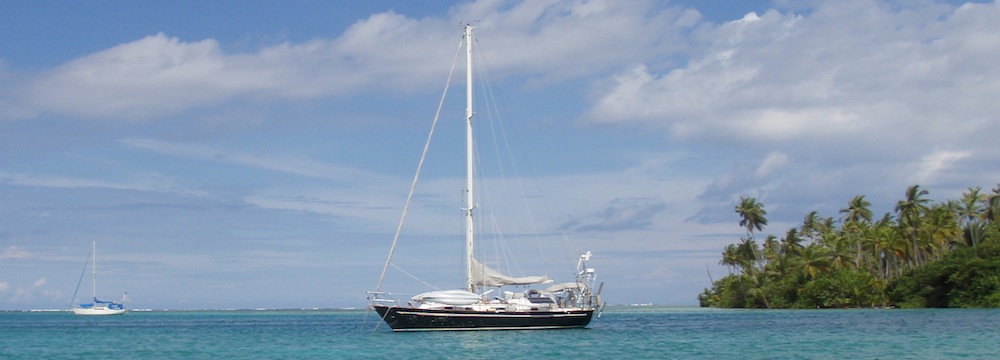
We once spent a week in a blow in an anchorage in the San Blas Islands that turned out to be totally protected, although it looked to me like we were anchored in the wide open – a strip island on one side, but breaking or almost breaking reefs on two sides and a brown bar (i.e. sandbar) on the other side. There was only a small opening to work our way inside, but it was very clearly deep blue water. We sat comfortably while the wind howled at over 40 knots at times in flat water with almost no boat motion to disturb the anchor. Of course, we dove on the anchor and made sure it was buried before the blow.

So when you’re looking for protection from a blow and there doesn’t appear to be anything in range, don’t forget about breaking reefs and brown bars for protection from the waves!
Anyone have other strategies for finding flat water anchorages? Please leave a comment & share! Cheers! Jan & David
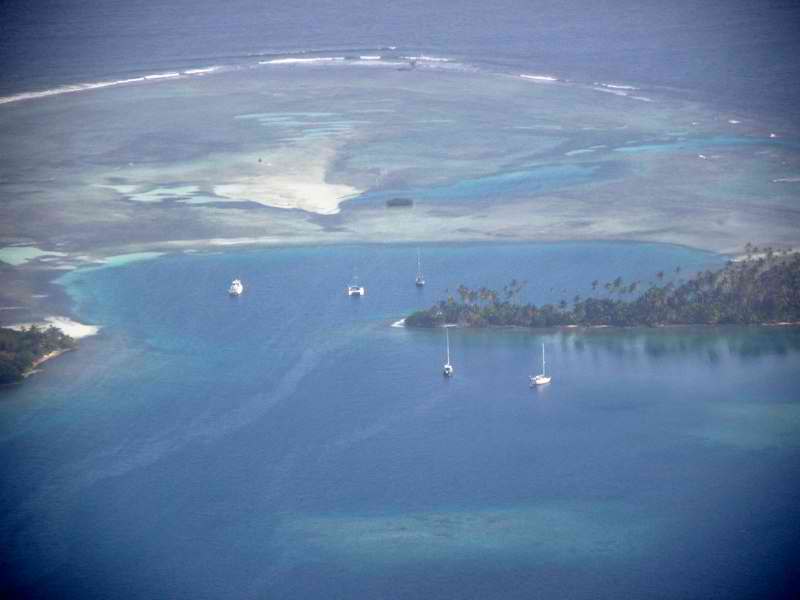


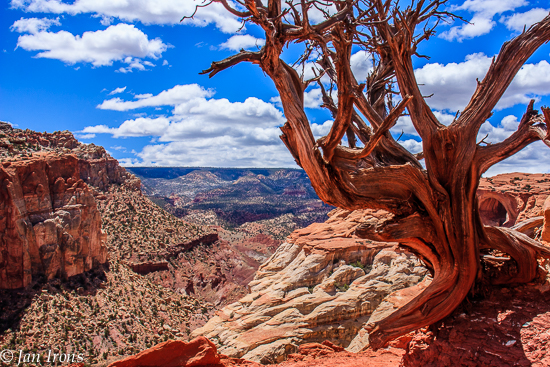







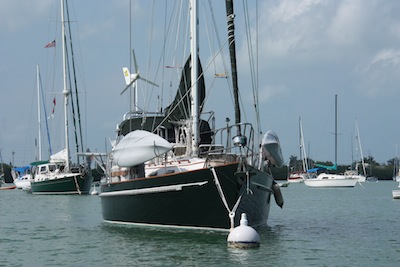

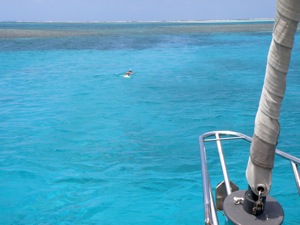
Thanks for the great, practical advise.
Jesse